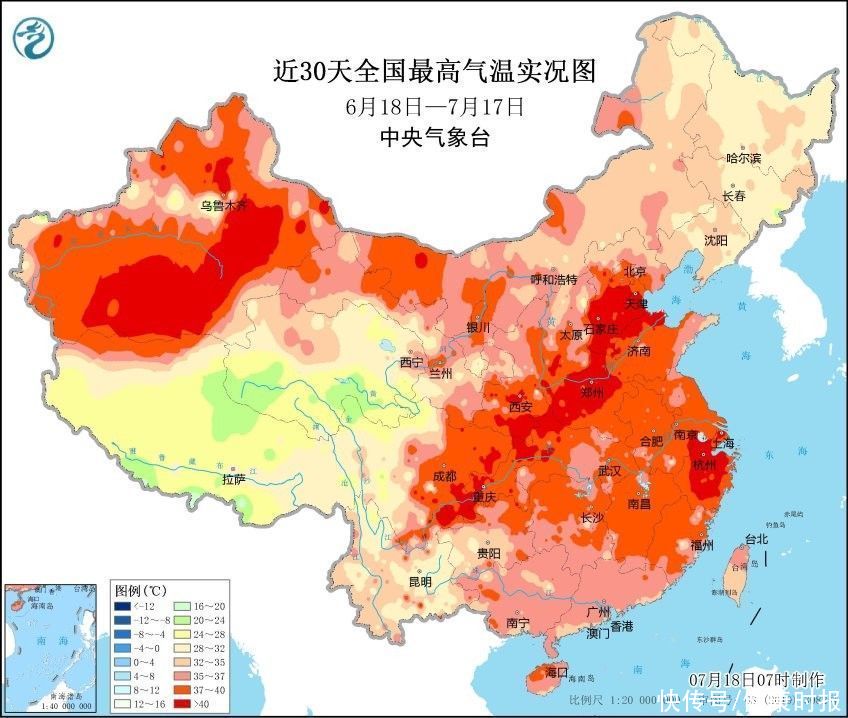內容目錄
People’s Daily Health Client Liu Xiaoxu
Since July, high temperature and heat waves have been raging in many places in my country. The number of patients increased sharply, and the patients were mainly trauma, cardiovascular and cerebrovascular diseases and heat stroke.

Wuhu, Anhui: 99 trips per day on average
According to the Dajiang Evening News of Wuhu, Anhui, Since July, the emergency center in Wuhu City, Anhui Province has increased from the usual daily average of more than 70 trips to 99 trips. Among them, trauma and cardiovascular and cerebrovascular diseases were the main diseases, and 11 patients suffered from heat stroke. This group of numbers has increased by more than 130 trips compared with the same period last year, which is estimated to be related to the high heat and the increase in the number of elderly residents. In addition, recently, an average of 3 heatstroke patients have been treated every day, and it can reach 4 or 5 in a long time, not counting those who went to other departments because of dizziness, vomiting and other symptoms. Few of these heatstroke patients are middle-aged and elderly people, and the vast majority are young and middle-aged workers.
Hefei, Anhui: More than 400 trips per day
According to the Xin’an Evening News, Hefei has an average of 423 trips per day since mid-June, and the number of vehicles dispatched increased by 14.6% over the same period last year. It is worth noting that, affected by the high temperature weather, the number of patients calling 120 due to trauma, cardiovascular and cerebrovascular diseases, and alcoholism has increased significantly recently, and the number of heatstroke patients is twice that of the same period last year. According to Yang Qing, Deputy Chief of the Dispatching Section of the Hefei Emergency Center, every year is the peak period for emergency calls. Due to the early hot weather this year, the number of ambulances dispatched by Hefei in June has far exceeded the average.
Shanghai Fengxian: Over the past two weeks, the number of trips has exceeded 1,700
“Shanghai Fengxian” WeChat public claims that in the past two months, there are about 3,400 to 3,800 trips in Fengxian in a single month, compared with In the same period last year, it increased by about 30%, setting a record for the highest single-month increase in nearly three years. Since July, the “120” first aid in the past two weeks has exceeded more than 1,700 trips, of which the highest number of trips in a single day is nearly 150. Patients with traumatic diseases, patients with cardiovascular and cerebrovascular diseases, and patients with respiratory system diseases ranked the top three in the recent calls for help. In addition, there has also been a substantial increase in the number of calls for help from heat stroke this year, with more than 60 calls made within two weeks.
Nanjing, Jiangsu: more than 600 trips per day
According to Nanjing Zero Distance Report, since July, 40 people in Nanjing have suffered severe heat stroke, and the number of 120 calls began to increase significantly. Ambulances made 631 trips on July 12 alone, and heatstroke and related illnesses due to high temperatures continued to increase. Guo Peng, the head of the Chengxi Branch of the Nanjing Emergency Center and an emergency doctor, said that the phenomenon of heatstroke caused by the recent high temperature environment has increased compared with the past.
Wuxi, Jiangsu: more than 3,000 calls for help
According to Wuxi Daily, the center has received more than 3,000 calls for help every day in the past two weeks, and more than 500 cars have been driven times, an increase of more than 250% compared with daily. On July 9, the number of calls and trips reached 3,214 and 589. Compared with the first and mid-July last year, the number of critically ill patients has doubled, reaching more than 1,000 in the past two weeks. In the past two weeks, the number of calls and car trips to the Wuxi Emergency Center has hit a record high in the center’s history.
In addition to heat stroke and heat stroke, attention should also be paid to cardiovascular and cerebrovascular health in hot weather
Heat stroke is more common under the heat of the day, and heat stroke has recently become a hot word on the Internet and received attention. Qi Wensheng, director of the emergency department of Guang’anmen Hospital of the Chinese Academy of Chinese Medical Sciences, suggested in an interview with the People’s Daily Health Client on July 14 that July-August is a period of high incidence of heat stroke, and infants and the elderly over 65 years old are high-risk groups, suffering from diabetes. The elderly should pay special attention to protection.
“When exposed to a high temperature environment, sweating, thirst, dizziness, headache, high fever, etc. should be considered, and heatstroke should be considered. Get out of the high temperature environment, move to a cool place, and ventilate and cool down in time. Cold salt water can recover in a short time. However, those with severe symptoms should be transferred to the hospital immediately.”
In addition, the most common cause of ambulance departures in various places recently is still cardiovascular and cerebrovascular diseases. Wang Fang, deputy director of the Department of Cardiovascular Medicine of Beijing Hospital, once said in an interview with Health Times that many cardiovascular friends think that “Good Friday” is mainly concentrated in the cold winter. Peak period of vascular disease attacks. Affected by excessive sweating, increased blood viscosity, and high temperature upset in summer, once cardiovascular and cerebrovascular diseases occur in summer, they are mostly acute diseases such as myocardial infarction and cerebral apoplexy, and more vigilance is required.